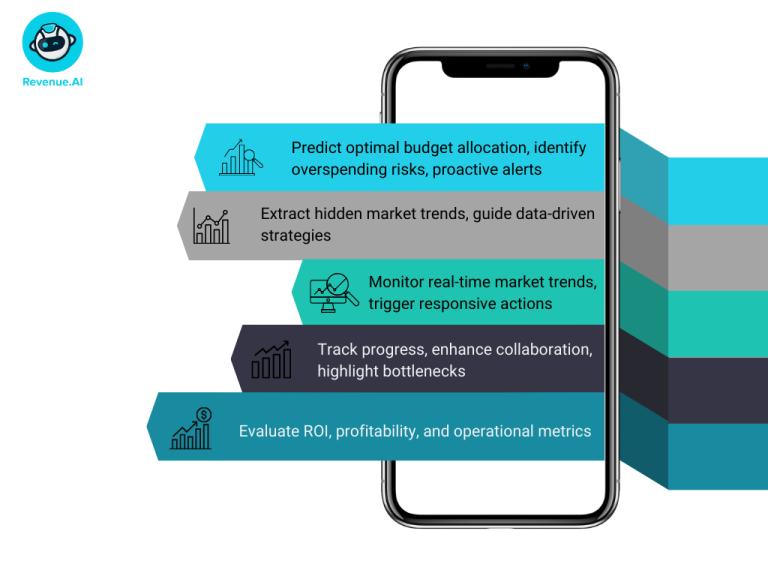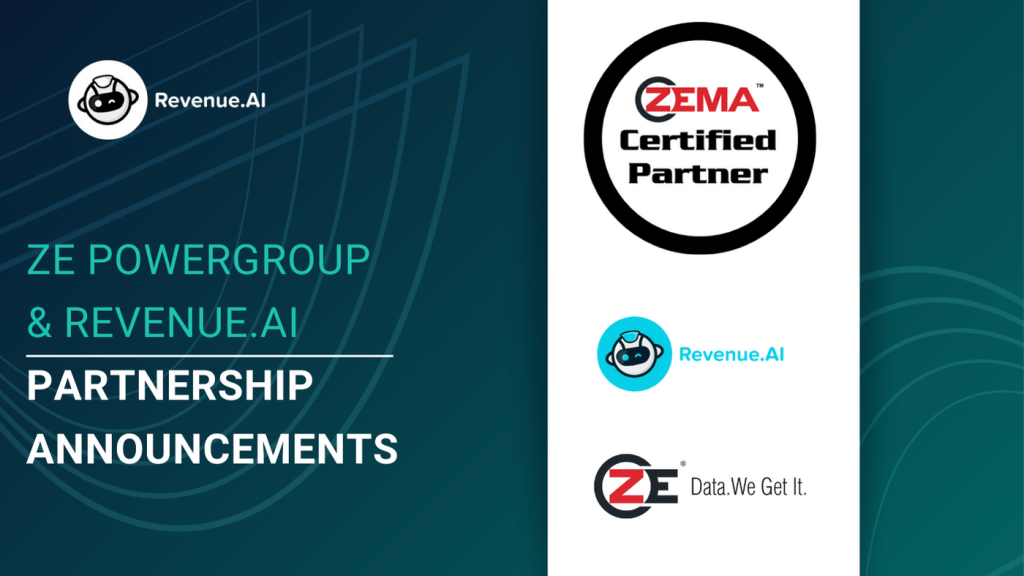
How Well-aligned Is Your Organization?
The inter-departmental cohesion process between sales, finance, and revenue growth management (RGM) departments is crucial for the overall success and effectiveness of an organization’s operations and strategic decisions.
Commercial departments play distinct yet interconnected roles within a company, and their collaboration and cohesion are essential for several reasons. Find out more via the illustration below.

Now, if we’d like to imagine this in practice, illustrative scenarios below will help.
Aspect of Cohesion | Illustrative Scenarios of Inter-departmental cohesion |
|---|---|
Financial Accountability | Verifying promo plans against budget before implementation to avoid cost overruns. |
Strategic Decision-Making | Allocating resources to products with high sales potential and optimal profit margins. |
Resource Allocation | Adjusting production and supply chain operations to meet the heightened demand for products during promotions. |
Consistency in Messaging | Ensuring that online and in-store promotions convey the same value proposition. |
Holistic Performance Evaluation | Analyzing the success of a promotion based on both sales figures and ROI percentage. |
Adaptation to Changing Conditions | Shifting promotion focus from outdoor snacks to home cooking ingredients during lockdowns. |
Accountability and Ownership | Jointly reviewing promotion results to identify areas for improvement and learning. |
Cross-Functional Innovation | Collaborating to develop a unique promotional event that leverages finance, sales, and RGM. |
Inter-departmental cohesion between commercial (sales, finance, marketing, and RGM) departments is mandatory for all business decisions. However, in this article, we’ll focus on its essentialness in maximizing the effectiveness of promotional strategies.
By leveraging each department’s expertise and insights, organizations can create well-informed, financially responsible, and strategically sound promotional plans. These further drive revenue growth while maintaining financial integrity.
The inter-departmental cohesion ensures better outcomes for individual campaigns and contributes to the long-term company success. If this topic piqued your interest, you may read a related HBR article on this link. We think it’s a good read. To go one step further, and learn about fully aligned organizations, visit this link.
On the other hand, negative outcomes can arise if an organization lacks alignment and inter-departmental cohesion in the context of promotional planning and execution. Check them out below.
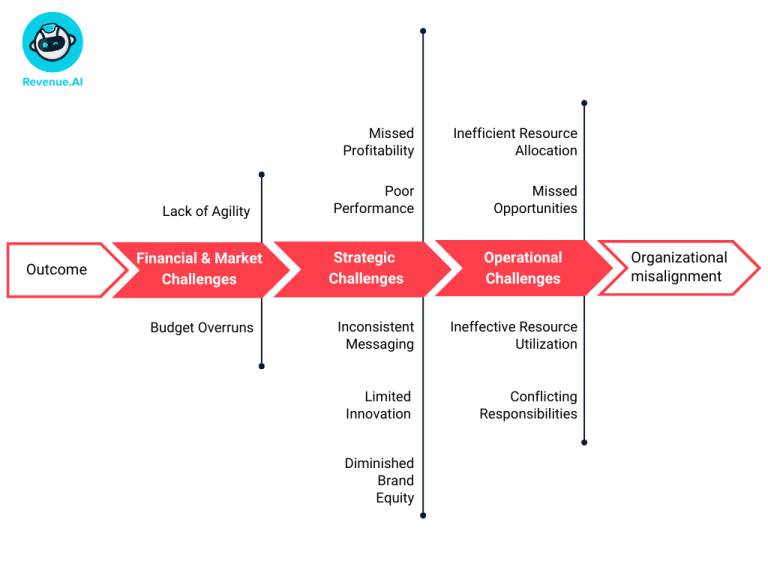
Delving into the categorized challenges, we’re getting an inside look at the nitty-gritty stuff that often flies under the radar. These challenges form the backbone of our organization, affecting how we roll day-to-day, our big-picture strategies, our financial game, and how we roll with market changes. From the way we manage resources to the way we message our brand; each challenge is like a puzzle piece that needs to find its spot.
Yet, within these challenges lie opportunities for transformation, and now that we understand the importance of inter-departmental cohesion, we can proceed to solving these challenges. In this article, we’ll focus on winning together through aligned and informed promotional execution.
New Way of Working Ahead: AI Insights
Imagine if you could instead of setting promo budgets based on estimates, and consistently overspending resources start allocating precise budgets for promotions. All this is possible with AI automation and predictions combined with inter-departmental cohesion efforts.
However, to do so, you’d have to be open to a new way of working, which incorporates AI-driven recommendations and insights. Now, why would you do so?
Well, incorporating AI-driven cognitive insights and alerts can amplify the benefits of inter-departmental cohesion by providing data-driven recommendations, real-time market insights, and proactive notifications. This synergy can lead to enhanced decision-making, improved performance evaluation, and better adaptation to changing market conditions, ultimately maximizing the success of promotional campaigns.
Or, when it comes to adapting to changing market conditions, AI can monitor real-time market trends and competitive activities, providing insights to quickly adapt strategies. When a competitor is raising their prices and you are not following, you can be notified with a simple Teams message, and act almost immediately.
Additionally, cognitive alerts could notify teams of market shifts, enabling agile response and competitive advantage. It could also enable holistic performance evaluation, as AI-driven analytics can comprehensively analyze both sales and ROI metrics, thus providing a more accurate assessment of promotional success.
Alerts could highlight performance areas where they deviate from expected outcomes, prompting quick adjustments. All you would need to do to track them is set the KPI thresholds you’d like to be alerted for, and the Copilot would alert you timely.
All in all, the new way of working would mean you’d utilize the power of cognitive AI engine driving insights based on historical data, enabling inter-departmental cohesion, and fully leveraging the power of data analytics.
Here are the steps you’d be taking in this new form of working:
- Business performance tracking via AI-driven insights and intelligent alerting
- Analyzing market data sent by the Copilot in an easy-to-collaborate way
- Setting a new actionable plan using simulations and predictive analytics
- Quickly aligning with your team in a way that enhances organizational alignment and inter-departmental cohesion.
We’ll now go through each step while sharing how it looks in practice.
Step 1: Receiving Actionable Business AI-driven Alerts from the Copilot
Step one would be receiving a trigger or an alert about competitor’s promotional activity from the Copilot, that shares the insights via Teams or any other messenger, as you can see below:

This is only one of many business insights, as many other triggers or insights may be received as well.
Step 2: Understanding the Competitive & Market Landscape with the Copilot
By clicking on the “Competitor performance” button, the Copilot will lead us to the relevant analytics in the platform, where we can further investigate the alert.
The main point of this step is to understand the reasons behind the alert. The Copilot is directly guiding us to the correct page on the platform with already pre-filtered items on the platform, aligned with the alert it sent, so we don’t need to waste time reviewing tons of analysis, or adjusting filters.
The intelligent assistant can also share this insight in a team chat, so the whole team or everyone inside commercial departments can stay informed at all times, enabling inter-departmental cohesion at all times, as well. The cognitive insights are easily shareable, as well as the data, as it can be bookmarked. The same goes for the relevant documents and reports, as they are easily found and shareable with the Copilot.
Now, without further ado, we’re going back to the analysis provided by the Copilot.
On the right, we can see the competitor’s promo calendar, and we can also observe which are the successful products inside the competitor’s portfolio. If the competitor activity seems misleading, you can always go to the knowledge base inside the platform and train yourself on various promo strategies and get more insights.
Additionally, there is an interesting article from McKinsey that explains this phenomenon of getting inside competitor’s heads. It’s more than the headline, check it out via this link. On top of that, they also have another good read where understanding competition is one of the key elements of steady growth, even during economic uncertainties. Check it out here.
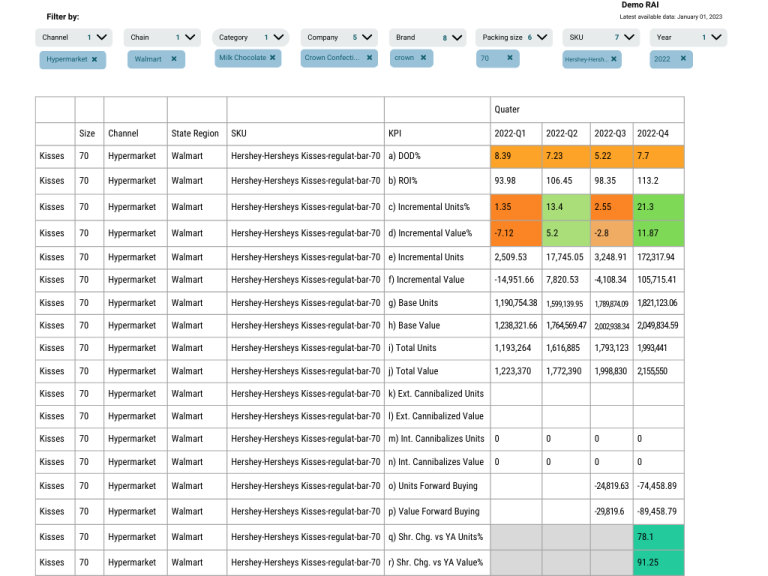
However, while studying competitors’ successful promotional activities provides valuable insights, it should be used as inspiration rather than imitation. Building a new promotional strategy requires aligning multiple commercial departments while incorporating market research findings for targeted campaigns that set you apart from competitors. This is where having strong inter-departmental cohesion can propel you forward quickly.
Additionally, by continuously evaluating and adapting our approach based on data-driven insights, you can stay competitive in an ever-evolving marketplace. This is exactly what the next step will allow us to take.
Step 3: Utilizing Advanced Simulations for Mitigating Loss
So far, the Copilot has helped us identify the problem, then guided us to uncover the reasons behind the problem, and as a final step, we’re reviewing the recommended action items, as guidance for optimizing promo planning.
If we go back to the Copilot alert, we can go to the button that will lead us to create a new promotional plan. When we proceed, this is where we will be taken:
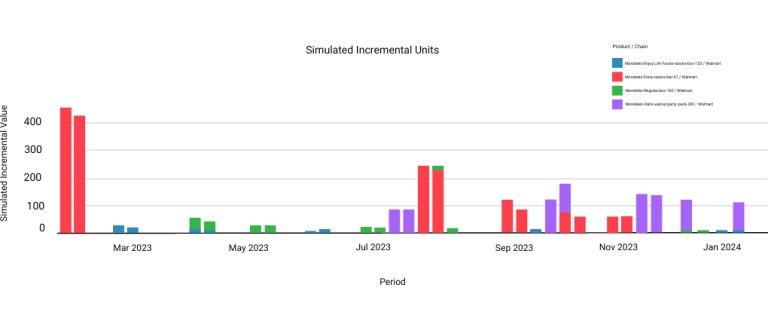
This is created by RAI Copilot and is available for the analysis for the future promo plan by checking simulated incremental units and value pages. For each product, RAI recommends a promo period and calculates the financial outputs of the execution plan.
Now, what this means practically, it that with every simulated incremental unit and value page, RAI Copilot sifts through historical data and market trends to predict the outcomes that await. But here’s the real kicker: it doesn’t stop at predictions. It also crafts insightful recommendations, seamlessly blending predictive analytics and AI wisdom to guide us to the sweet spot—choosing the perfect promo timing while decoding the financial implications for us.
With various granularity of analysis available, you can also dive into the desired details of the promo plan by clicking P&L impact to understand the full outputs of the promo plan. RAI Copilot showcases the dynamic duo of AI and predictive analytics, proving that when they join hands, they pave the way for strategic success.
The only thing left is to compare the new plan with the promo budget, to ensure that adequate resources are allocated.
Step 4: Seamless Transformation: The Power of New Plan Inter-departmental Cohesion with RAI COPILOT
Without leaving the portal, and by using RAI Copilot you may find the yearly promo budget plan in SharePoint and check if the new promo plan is in line with the yearly promo budget.
So, here’s the game-changing scoop: With RAI Copilot, locating the latest promo budget document on SharePoint and assessing its harmony with your fresh promo plan is as effortless as a few clicks. Once the comparison is complete, your plan stands primed for the ultimate review and working cohesively across departments.
And here’s the kicker: not only can you save this new plan with a simple bookmark, but you can also effortlessly share it across various departments, driving Inter-departmental cohesion. This seamless collaboration sets the stage for everyone’s input and final review, turning disjointed efforts into a harmonious symphony of strategic synchronization.

What do you think of this new way of working? Can you imagine the transformation? If you are not convinced, be sure to check the next paragraph as it shows the details of the transformation.
From Disarray to Inter-departmental Cohesion: Navigating Your Path to Promotional Excellence
Before implementing a comprehensive inter-departmental cohesion strategy, various aspects of promotional planning and execution within different departments often operate independently, resulting in inefficiencies and missed opportunities.
However, upon adopting a well-structured inter-departmental cohesion strategy, fueled by data analytics, the organization that was working in disarray could see significant improvements in its promotional planning and execution processes.
With all being said, in the end, we can conclude that inter-departmental cohesion drives a lot of positive change. Let’s explore how.
Aspect of Alignment | Before Alignment | After Alignment |
|---|---|---|
Financial Accountability | Budgets for promotions set based on estimates, potential for overspending. | Precise budget allocation for promotions driven by historical data analysis, minimizing overspending. |
Strategic Decision-Making | Decisions based on limited insights, potential misalignment with goals. | Data-driven decisions leveraging analytics, aligning strategies with market trends, financial projections, and sales. |
Resource Allocation | Resource allocation ad hoc, potential resource shortages, or redundancies. | Optimized resource allocation based on data analysis, ensuring efficient staffing, inventory, and operational needs. |
Consistency in Messaging | Messaging varies across channels, lacks a unified brand identity. | Cohesive messaging across channels, aligning promotions with brand identity through data-driven customer insights. |
Holistic Performance Evaluation | Performance evaluated on sales metrics alone, lacking holistic view. | Comprehensive evaluation using data analytics, considering sales, ROI, and other financial and operational metrics. |
Adaptation to Changing Conditions | Slow adaptation to market changes, missed opportunities. | Agile response to evolving conditions, driven by real-time data analysis, capturing market shifts, and acting promptly. |
Accountability and Ownership | Departmental silos, limited collaboration, and unclear responsibilities. | Enhanced collaboration and accountability through data sharing, ensuring ownership of tasks, and aligning efforts. |
Cross-Functional Innovation | Limited exchange of ideas, missed opportunities for innovation. | Data-driven cross-functional brainstorming, leveraging diverse insights for innovative promotion strategies. |
Now, embracing a new approach to work entails not only enjoying the array of benefits synonymous with organizational alignment outlined above but also integrating the power of R(AI) into your workflow, adding an extra layer of enhancement.
Consider it as the cherry on top – the transformative touch that propels your efforts to an entirely new level. Here’s a glimpse of the profound implications it holds.
RAI Copilot can enhance each aspect of organizational alignment and inter-departmental cohesion to create a more efficient, strategic, and customer-centric approach to promotional planning and execution.
We already talked about how the role of RGM is changing and the power of cohesion with AI, here, however, if you are new here, feel free to read it.
All in all, the infusion of AI insights can transform the alignment process into a well-informed, proactive, and agile endeavor, optimizing the effectiveness of promotional strategies while leveraging the power of inter-departmental cohesion.
If you’d like to transform your commercial department into a cohesive team let’s chat about how we can help.
